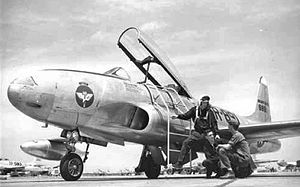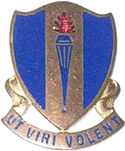Army Air Forces Flying Training Command
| Flying Division, Air Training Command | |
|---|---|

Postwar T-33A Shooting Star jet fighter training
|
|
| Active | 1926–1949 |
| Country |
|
| Branch |
|
| Type | Command and Control |
| Role | Training |
| Part of |
Army Air Forces Training Command Air Training Command |
| Engagements | |
| Commanders | |
| Notable commanders |
1940 Oct 4-1941 Oct 22: Gerald C. Brant 1941 Oct 23-1941 Nov 30: Frank P. Lahm 1941 Dec 1-1942 Sep: Hubert R. Harmon 1942 Sep-1943 Jul 31: tbd |
| Insignia | |
| Flying Division, Air Training Command emblem |  |
Flying Division, Air Training Command is an inactive United States Air Force unit. It was last assigned to Air Training Command, stationed at Randolph Air Force Base, Texas. It was inactivated on 14 November 1949.
The organization was initially organized in 1926 as the main pilot training organization for the Army Air Corps. It was later one of three training commands by the Office of the Chief of Air Corps in 1940 to accommodate the large number of Air Cadets being recruited due to the expansion of the Army Air Corps after the Fall of France. During World War II, thousands of cadets were in training at various flight schools across the Central United States being trained as pilots for fighters, bombers and transports. The command also trained the navigators, bombardiers and gunners necessary for the bombers to attack enemy targets in the combat areas overseas. After World War II ended, it became the primary pilot and aircrew training organization for Air Training Command during the postwar years.
With the demobilization of the Air Service after World War I, the Army's air arm remained quite small during most of the interwar period.
Primary flight training was held only at March Field in California and Carlstrom Field in Florida. The pilot school course combined ground school and elementary flight training. Cadets flew training flights in wartime surplus Curtiss JN-4D Jennies and also deHavilland DH-4s. The first class of cadets at both March and Carlstrom were enlisted men from various Air Service units. Civilians constituted most of the second class. Advanced training was held at Post Field, Fort Sill, Oklahoma for observers and pilots. Pursuit and bombardment training took place at Kelly Field.
...
Wikipedia
